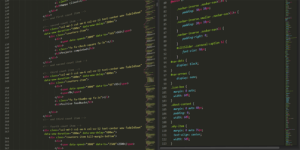Table of Contents
Have you ever wondered what server-side rendering is? Does Gmail use this technology? What are the benefits of server-side rendering? These are some of the questions that may come to mind when considering server-side rendering.
Server-side rendering has become increasingly important in recent years. According to a study by researchers at Stanford University, server-side rendering is more efficient than client-side rendering in many cases, and is also better for search engine optimization. Additionally, server-side rendering can make websites more secure by preventing malicious code from infiltrating user’s computers. Given the importance of these benefits, it makes sense to consider server-side rendering for all webpages.
Gmail does use some server-side rendering technology. Google is constantly evolving the technology in order to improve user experience and performance for its users. However, server-side rendering is only one of the components of a complete web solution, and it is important to consider all aspects of the solution when evaluating webpages.
In this article, you will learn the basics of server-side rendering, as well as the advantages and disadvantages of using it for webpages. We will also discuss the role of server-side rendering in Google’s Gmail, and how it can be used to improve user experience and performance. Finally, we will provide an overview of what to look for when evaluating server-side rendering solutions for webpages.Definitions:
Server-Side Rendering – This is a process that involves a rendering engine, which is located on the server, that is used to render components of a website into a static HTML page. This pre-rendered page is then sent to the client. This process can increase the speed and performance of a website, as the server is able to pre-render the page allowing the content to quickly be displayed by the browser.
Gmail – Gmail is an email provider developed by Google that makes use of cutting-edge web technologies to deliver a user-friendly experience. While Gmail does not strictly use server-side rendering, it does use other web technologies to render faster, and generally has better performance than if it relied solely on client-side rendering.
Heading 1: Definition of Server-Side Rendering
Server-side rendering (or “SSR”) is the process of taking content, typically HTML markup, generated on the web server and passing it to a browser. With SSR, instead of sending blank HTML to the browser and waiting for the user’s JavaScript to be parsed and rendered in the browser, the user receives fully rendered HTML which may translate to faster page loads and an improved user experience.
What Content Can Be Rendered With SSR?
SSR requires applications to be built to make use of the technology. This comes in two forms: pre-rendered or server-rendered HTML (which can be easily crawled and indexed by search engines). Typical server rendered content includes dynamic page content (like a blog post or list view section) and dynamic parts of the page, such as a navigation menu or login form.
What Are The Benefits Of Server-Side Rendering?
The biggest benefit of server-side rendering is improved page loading times on slower internet connections. This is because prerendering HTML markup allows pages to be sent to users faster than JavaScript-only rendered websites. This can significantly improve user experience, especially in countries with slower internet connections or devices with limited resources.
Server-side rendering can also have SEO benefits, as search engines can crawl and index SSR rendered website content faster than JavaScript-rendered websites. Finally, server-rendered websites can provide unique and targeted information for users quickly, with the result that they may be more likely to stay on a website and view more content.
Features of SSR
- Pre-rendering of HTML content
- Dynamic content can be rendered on the server
- Improved page loading times
- SEO benefits
- Targeted content for users
Gmail does not use server-side rendering, as it is a client-side application. Instead of rendering content on the server, it renders content using JavaScript on the client.
Heading 2: How Does Server-Side Rendering Work?
Server-side rendering is a web application software process that captures dynamic web page content and renders it as HTML prior to the page being delivered to a user’s web browser. The server does this by processing a web page’s code, and then sends it back to the user in HTML form. This process allows for webpages to render quickly and display content irrespective of a user’s browser or device.
Advantages of Server-Side Rendering
Server-side rendering provides numerous advantages over client-side rendering. Firstly, the page loading time is much faster than the latter, as pages are already pre-rendered on the server. In comparison, client-side rendering requires browsers to re-render the page again, which can be slow if the page is heavily populated with dynamic content. Secondly, this method is easier to implement due to pre-defined templates and dynamic HTML code. Thirdly, it is less likely for page content to be manipulated by a malicious user, since it is transmitted securely between the user, server, and database. Finally, server-side rendering is more SEO friendly due to its ‘crawlability’, as content is already accessible to search engines prior to a user accessing the page.
Disadvantages of Server-Side Rendering
Despite its many advantages, server-side rendering has some drawbacks. Firstly, it is not as practical in the development of complex web applications, as pages will not utilize JavaScript for updates. Secondly, debugging errors can be time consuming, as the content is updated through a back-end server which is difficult to trace. Thirdly, scalability can be an issue as more pages are added or more users access the site, due to server load increases. Finally, server-side rendering can be expensive due to the extra servers required to run the scripts.
Gmail does not use server-side rendering, instead relying on client-side rendering, which is a process of rendering a web page in the user’s browser. This enables Gmail to provide a more flexible and interactive experience for its users.
Heading 3: Does Gmail Use Server-Side Rendering?
Server-side rendering (SSR) is a process in website development that involves rendering an entire webpage on the web server before sending it to the user’s browser. This process enables the web page to display more quickly and avoids the need for the user’s browser to load and render the HTML, CSS and scripts.
What are the Benefits of Server-Side Rendering?
Server-side rendering has a number of advantages over the more conventional client-side rendering, which is the approach that most contemporary websites generally use. SSR can improve performance, enhance SEO, and create a smoother user experience.
By allowing the server to generate the HTML, instead of the browser, the web page can be put together much faster since no time needs to be wasted on the browser compiling or executing the client-side code. This also saves resources, both for the user and the web server, since the majority of the processing is done on the server, rather than the user’s device.
Server-Side Rendering and SEO
Server-side rendering is especially beneficial for SEO purposes, since search engine crawlers are better equipped to render server-side generated HTML. Server-side rendered pages can be read by search engine crawlers more easily and more quickly than client-side rendered pages, since the search engine crawlers don’t need to run the JavaScript code before they can see the content.
Does Gmail Use Server-Side Rendering?
No, Gmail does not use server-side rendering. Gmail is a web-based email service made by Google and it is fully client-side rendered using JavaScript. Once the main HTML document is loaded, an extensive set of JavaScript code is then executed in the browser, which takes care of parsing and displaying the email.
Conclusion
.
Server-side rendering (SSR) is a term used to describe the process of generating webpages on the server side instead of the client side. It has become increasingly popular as web applications become more data-driven and feature-rich. With SSR, a web application is able to send more optimized code to clients which, in turn, provides them with better page performance. But, is this technology used by Gmail?
If you are eager to find out more about the use of server-side rendering on web applications, such as Gmail, then keep following our blog for the latest releases. We regularly publish geared towards those that are curious about the technicalities of web development and the improvements that are being brought out with the use of SSR.
Frequently Asked Questions:
What is server-side rendering?
Server-side rendering is the process of generating webpages on the server side instead of the client side. It enables web applications to send more optimized code to clients for improved page performance.
Does Gmail use server-side rendering?
Gmail does not publicly state its use of server-side rendering, but as an increasingly popular technology, it is likely that they do.
What are the benefits of server-side rendering?
The main benefit of server-side rendering is better page performance for clients, as the web application can send more optimized code. Additionally, server-side rendering offers better scalability as the code is handled on the server, so the client does not need to take any additional load.
What type of web applications use server-side rendering?
Server-side rendering is most commonly used by web applications that are data-driven and feature-rich. However, the technology should be applicable to all web applications.
How does server-side rendering work?
Server-side rendering works by the web application generating the page on the server side and then converting the code to HTML page markup. This markup is then sent to the client for rendering on the browser. The server processes all of the code and delivers a ready-to-render page to the client.

